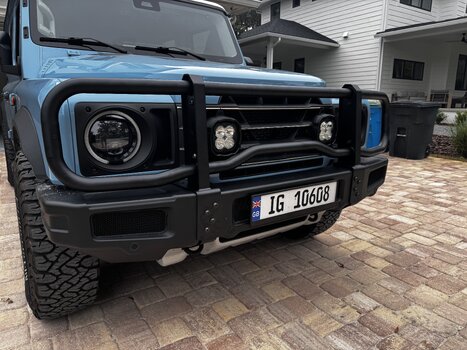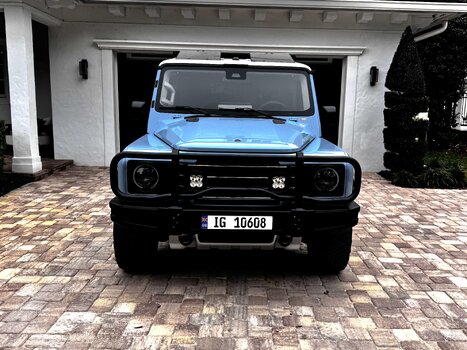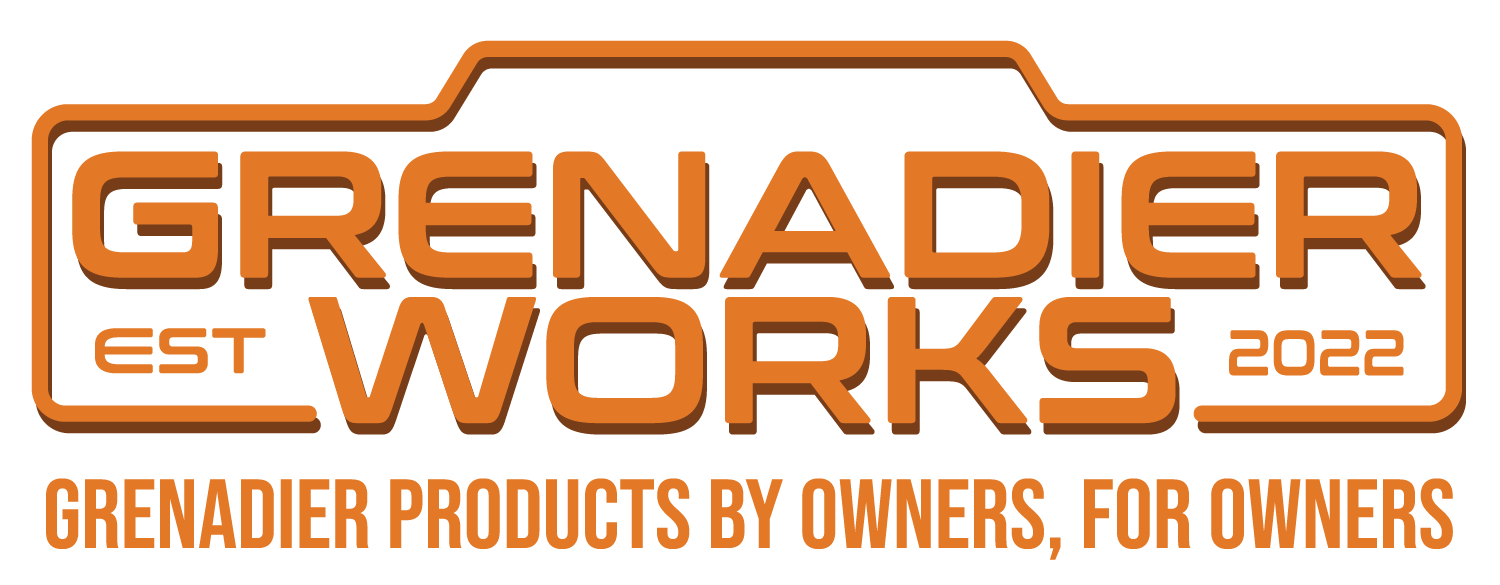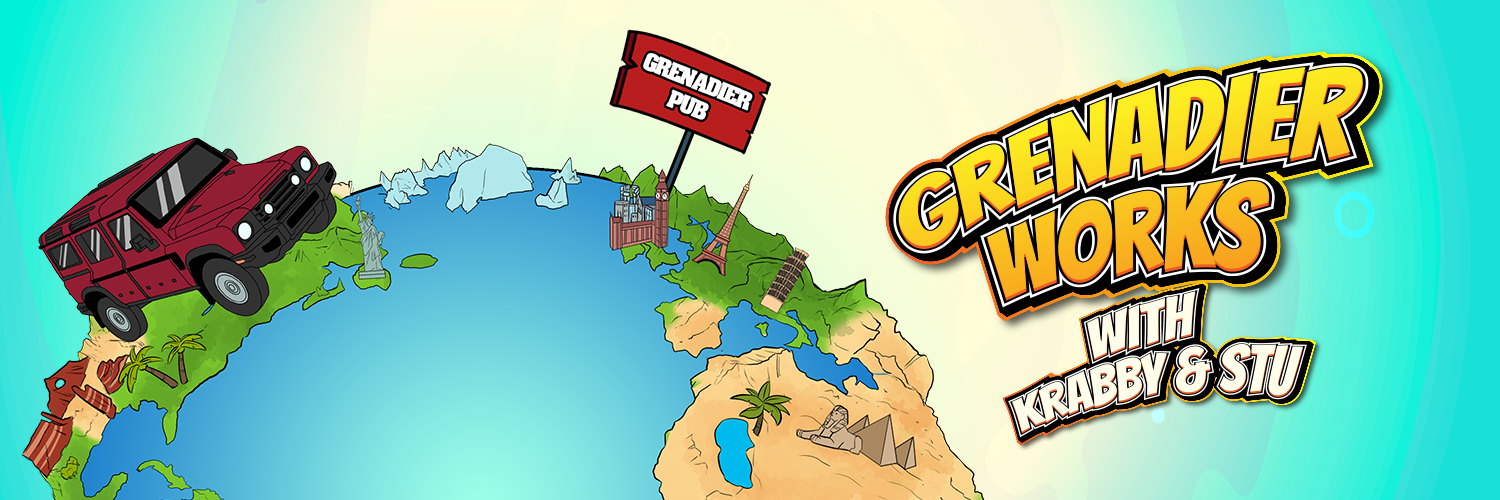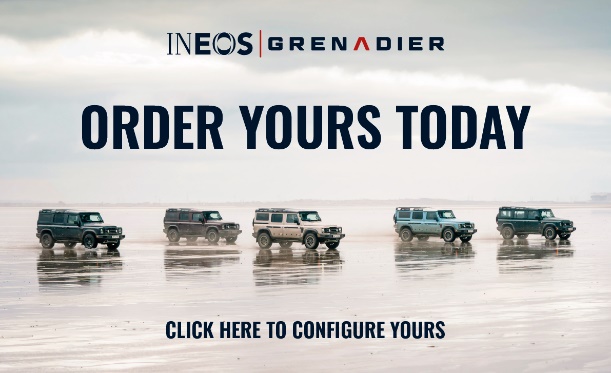Happy Friday!

The Grenadier Forum
Register a free account today to become a member! Once signed in, you'll be able to contribute to the community by adding your own topics, posts, and connect with other members through your own private inbox! INEOS Agents, Dealers or Commercial vendors please contact admin@theineosforum.com for a commercial account.
You are using an out of date browser. It may not display this or other websites correctly.
You should upgrade or use an alternative browser.
You should upgrade or use an alternative browser.
NA Bull Bar
- Thread starter WyomingRoaming
- Start date
I bought the bull bar and installed it myself about 5 months ago. As stated in a previous post I had absolutely no sensor issues and was pleasantly surprised how beefy this thing was. I’ve seen a handful aftermarket bull bars and none are as robust. Super heavy guage and strong mount points.I was just curious as to the information surrounding bull bar in North America (US) specifically. It seems as though the group consensus is that we will not receive that option here. It is not on the configurator for the US, but it is for Australia, most countries in Africa, and most in the Middle East.
I understand that in the Europe there are legal obstacles that would prevent it from being factory fit, but in the US, the G class has either lower or upper brush guards, and a handful of other vehicles could be fitted from the factory (or dealer) with them, too (like some Land Rovers, or even the Tahoe/Suburban until about 2011).
Is this all speculation, and the fact that it is not an option on our configurator? Or is there more that I have missed?
I particularly like the bull bar… in fact, there is not a single vehicle in my family that is not fitted with a replacement winch bumper or brush guard, from my wife, to my brother to either of my parents! With the exception of the sedans. More upside to the protection and utility than not for my use…
Happy Friday indeed. My GP bull bar arrived this week while I was traveling and is sitting in my garage now ready for install tomorrow morning 
Got my GP kangaroo bar installed to be safe from all the kangaroos in North America.
The quality is super high. Very top notch product / precisely engineered.
Very happy with the outcome and investment.
The quality is super high. Very top notch product / precisely engineered.
Very happy with the outcome and investment.
Attachments
I am currently in LA, but was in Sherman Oaks earlier today.
I saw an Eldoret Blue/black roof in my rear view mirror and immediately had to smile.
However, it also had something I have never seen, it had a lowered brush bar, very much like the Current G63 Style. It was down low and painted Eldoret Blue. It looked pretty cool and way different, but had already driven past before I could get a picture.
Has anyone seen this before, I would be interested to see more of how it was done or who did it.
I saw an Eldoret Blue/black roof in my rear view mirror and immediately had to smile.
However, it also had something I have never seen, it had a lowered brush bar, very much like the Current G63 Style. It was down low and painted Eldoret Blue. It looked pretty cool and way different, but had already driven past before I could get a picture.
Has anyone seen this before, I would be interested to see more of how it was done or who did it.
Last edited:
Dissent must be getting closer to the release of their bumpers, since they just dropped this video yesterday featuring their front bumper with bull bar plus their rear bumper with a swinging gate for the spare plus a swinging ladder:
Also, here's a quick vid of Road Armor's bumper/bull bar and rear bumper offering:
I'm digging how the Road Armor bull bar is solidly welded to the bumper as opposed to being bolted on. I see that even Dissent's is bolted on.
I'm digging how the Road Armor bull bar is solidly welded to the bumper as opposed to being bolted on. I see that even Dissent's is bolted on.
the brush bars are welded to a plate, that is bolted on with 4 bolts. the welds will fail on all of these including road armors before the fasteners will. of course, if youre in a situation where you're close to this being an issue, youre rather screwed anyway. the one i designed for my lx470 was quick release with two bolts each side in double sheer, and dropped down to be a game carrier for deer. I wanted to make a second unit that was a rod holder, but never got to it. the advantage of a simple weld on, is the production cost for the unit as a whole is lower. the downside is, the lack of versatility.Also, here's a quick vid of Road Armor's bumper/bull bar and rear bumper offering:
I'm digging how the Road Armor bull bar is solidly welded to the bumper as opposed to being bolted on. I see that even Dissent's is bolted on.
To be clear, you're referring to Dissent's offering as being bolted on. I dunno, man. If I had my druthers, I think I would want a unibody approach like Road Armor's to remove all doubt in my mind. I really wanted an ARB unibody offering like the one on my daughter's old Land Cruiser, but ARB is not making them for the Grenadier. I got to see first hand how freaking indestructible ARB's bar was when my daughter had parked her LC on the street in front of my house and an elderly neighbor driving down our street passed out behind the wheel and his car tried to pick a fight with the LC. It sideswiped her car, which woke the neighbor up, whereupon he turned the wheel sharply to the left. At that point his car said, "Let's go!" to the front right corner of the LC and the ARB bull bar bumper stepped up and said "You don't want nunna this!"the brush bars are welded to a plate, that is bolted on with 4 bolts. the welds will fail on all of these including road armors before the fasteners will. of course, if youre in a situation where you're close to this being an issue, youre rather screwed anyway. the one i designed for my lx470 was quick release with two bolts each side in double sheer, and dropped down to be a game carrier for deer. I wanted to make a second unit that was a rod holder, but never got to it. the advantage of a simple weld on, is the production cost for the unit as a whole is lower. the downside is, the lack of versatility.
The most likely scenario in which I will need a bull bar in my neck of the woods is a deer strike, and I just like the idea of solid welds versus bolts.
I'm not against any way you want it, all I'm saying is there is no advantage for either in real world applications like the wreck you posted.. the thicker metal wins. But for betting purposes, I'll put my 50000-100000lbs per bolt of tensile or sheer over your 2.6mm (.10"DOM) welded seem any day.To be clear, you're referring to Dissent's offering as being bolted on. I dunno, man. If I had my druthers, I think I would want a unibody approach like Road Armor's to remove all doubt in my mind. I really wanted an ARB unibody offering like the one on my daughter's old Land Cruiser, but ARB is not making them for the Grenadier. I got to see first hand how freaking indestructible ARB's bar was when my daughter had parked her LC on the street in front of my house and an elderly neighbor driving down our street passed out behind the wheel and his car tried to pick a fight with the LC. It sideswiped her car, which woke the neighbor up, whereupon he turned the wheel sharply to the left. At that point his car said, "Let's go!" to the front right corner of the LC and the ARB bull bar bumper stepped up and said "You don't want nunna this!"
View attachment 7894070
View attachment 7894071
View attachment 7894072
The most likely scenario in which I will need a bull bar in my neck of the woods is a deer strike, and I just like the idea of solid welds versus bolts.
I'd love to learn more about this and have an open mind. Are there any studies anywhere that have compared the bend/break resistance of welded bull bars versus bolted on ones? I'm fairly certain none of the bull bar manufacturers we are discussing in this thread have conducted such real world tests on their offerings. I get it that it depends on the strength of welds and bolts, but it just *seems* more logical to me that bolted on bars are more susceptible than welded on bars to being bent back into the area they are designed to protect when hit with X amount of force at speed. That opinion is purely backed by gut and intuition at this point. For example, I know that any bolt can loosen over time and can be hard to detect if the nut is hidden from view. It just seems like the more bolts you have, the more potential failure points you have that could be hidden from view. Welds seem easier to inspect from that perspective.I'm not against any way you want it, all I'm saying is there is no advantage for either in real world applications like the wreck you posted.. the thicker metal wins. But for betting purposes, I'll put my 50000-100000lbs per bolt of tensile or sheer over your 2.6mm (.10"DOM) welded seem any day.
Last edited:
Similar threads
- Replies
- 8
- Views
- 251
- Replies
- 6
- Views
- 1K
- Replies
- 2
- Views
- 324
- Replies
- 11
- Views
- 281


